Here’s an in-depth analysis of all the different types of headphones you can get on the market today.
The headphones industry has one of the fastest-growing markets today, with millions of models launched and sold yearly. As such, buying a new pair of headphones couldn’t be more challenging, considering there are so many types available.
Each headphone type is suited for a specific purpose, making it even more complicated. So, it’s not like you can go out and buy a pair of headphones and expect to use them for all your activities.
It sounds complex, but it doesn’t need to be. In this guide, we’ll discuss the different types of headphones and break down their advantages and disadvantages. We’ll also explain which headphone types are best suited for which lifestyles and activities so you can make a smart purchase. Let’s dive in!
4 Types of Headphones Based on Fit
Typical headphones feature two ear cups with speaker drivers or transducers that turn audio signals into analog sound waves that your ears can hear. You can categorize them according to design, connectivity, and technology type. However, the most common classification used for headphones is fit.
Here are the popular fit types for headphones:
1. Over-ear headphones
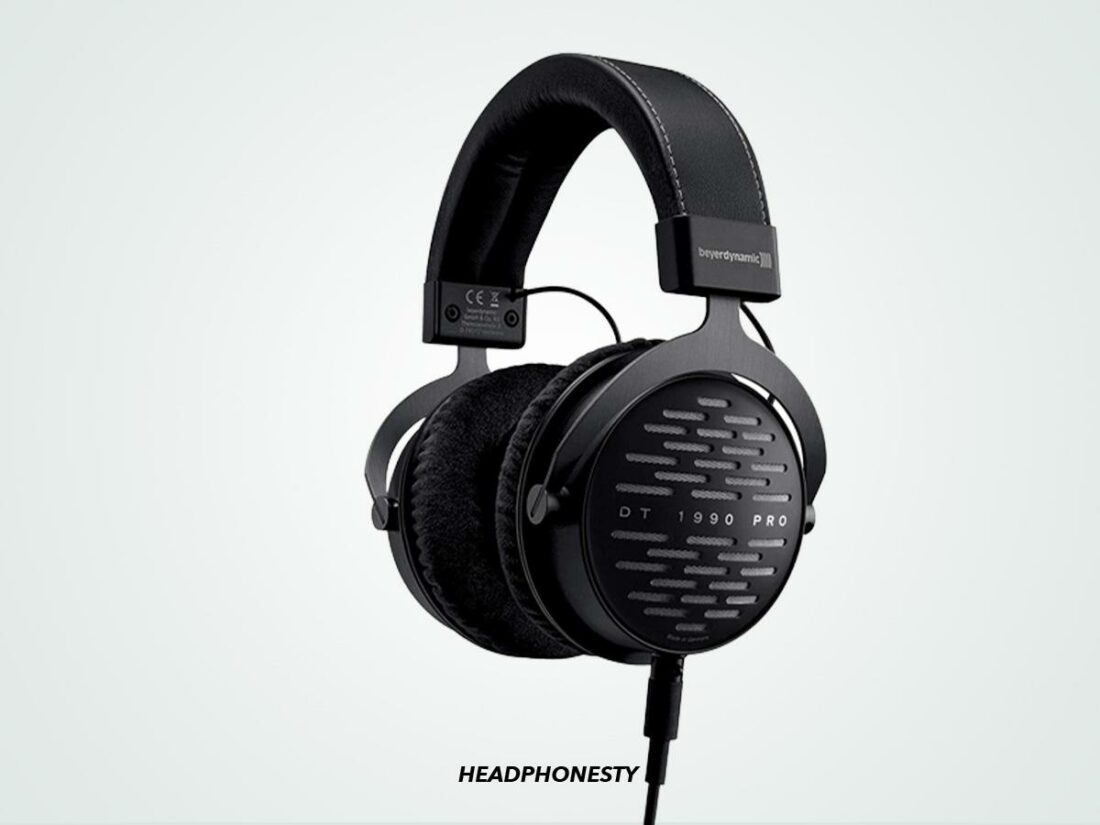
Also called “circumaural headphones,” these headphones have thicker headbands and larger ear cups that fully encompass both ears. They’re also notably bulkier than other types of headphones.
Advantages of over-ear headphones
- Comfortability: Larger ear cups mean more room for plush padding. As such, they’re more comfortable for prolonged wear.
- Sound quality: Due to the additional space inside the ear cups, over-ear headphones tend to have bigger drivers. These are capable of delivering arguably better and louder sound. However, this also depends on how well-tuned they are.
Disadvantages of over-ear headphones
- Portability: Since over-ear headphones are bulkier than most headphone types, they take up more space and may not be ideal for people on the go.
- Cost: Although there are cheap over-ear headphones, bigger and better features also translate to a higher price tag. After all, producing cutting-edge technology to improve sound quality is extensive and expensive.
Who should buy over-ear headphones?
Over-ear headphones are essentially about comfort. The ear cups are large enough to enclose the entire ear, allowing wearers to keep them on for a long time. This also makes them ideal for those with bigger ears. However, given their size, they’re not recommended for on-the-go use.
Moreover, over-ear headphones also benefit glasses-wearers. Since they press around the ears instead of on the ears themselves, there’s less pressure on the temporal bone and ear cartilage. So, they won’t hurt the area where you put your glasses.
Sample over-ear headphones
2. On-ear headphones
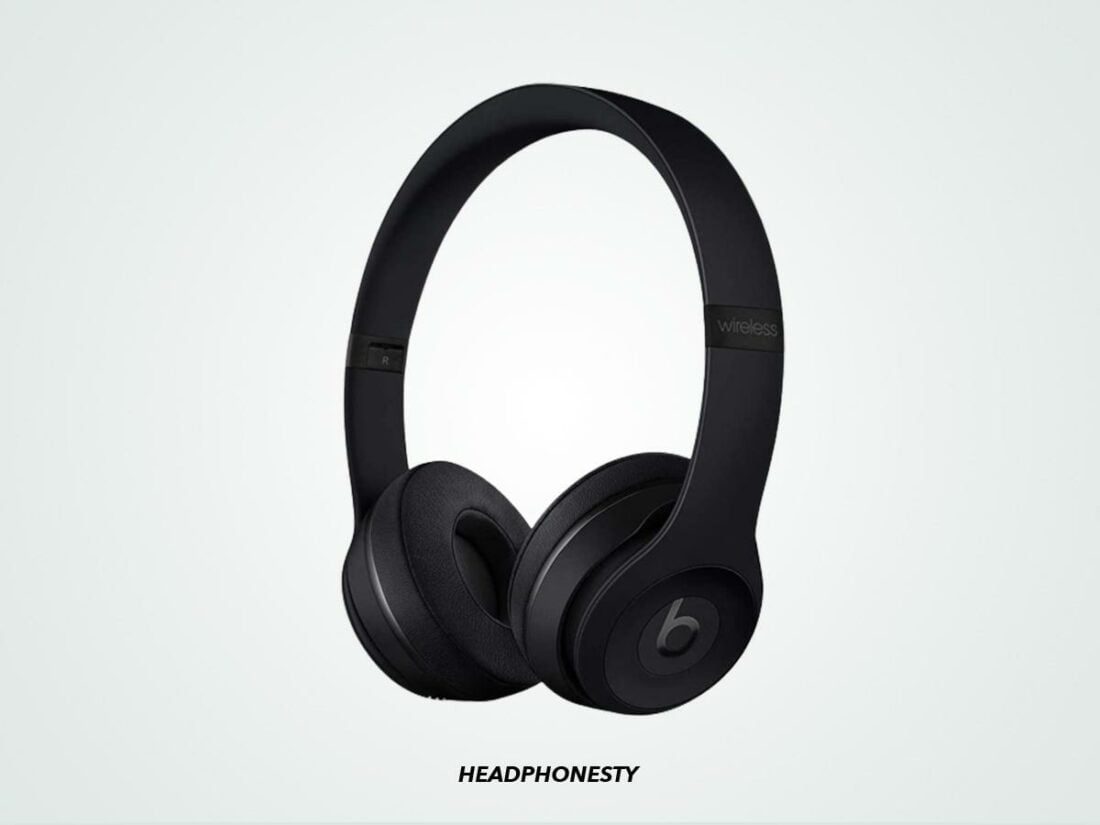
On-ear headphones have smaller ear cups than their over-ear counterparts. So, instead of completely covering the ears, the ear cups rest over them.
Advantages of on-ear headphones
- Portability: On-ear headphones have a lighter, smaller build than over-ears and are, therefore, more portable.
- Versatility: Since on-ear headphones are more lightweight and less bulky, they feel more stable when worn. This allows you to use the headphones during more activities without worrying about them slipping off.
Disadvantages of on-ear headphones
- Comfortability: On-ears press directly on your ears, flattening them out. This could get uncomfortable after extended use, especially if you wear glasses.
- Sound leakage: Unlike over-ear headphones, on-ears don’t completely cover the ears. So, audio leaks will occur, which could bother you or the people around you.
- Noise isolation: If your audio is leaking, chances are outside noise is flooding in as well. Therefore, if you’re particular about noise isolation, you won’t want to go with on-ear headphones.
Who should buy on-ear headphones?
On-ear headphones are certainly more lightweight and versatile than over-ear headphones. However, they don’t outperform earbuds in terms of portability. Ultimately, on-ear headphones make a great alternative if you’re looking for something easy to bring around and are not a fan of sticking earbuds into your ear canals.
Sample on-ear headphones
3. Open-ear headphones
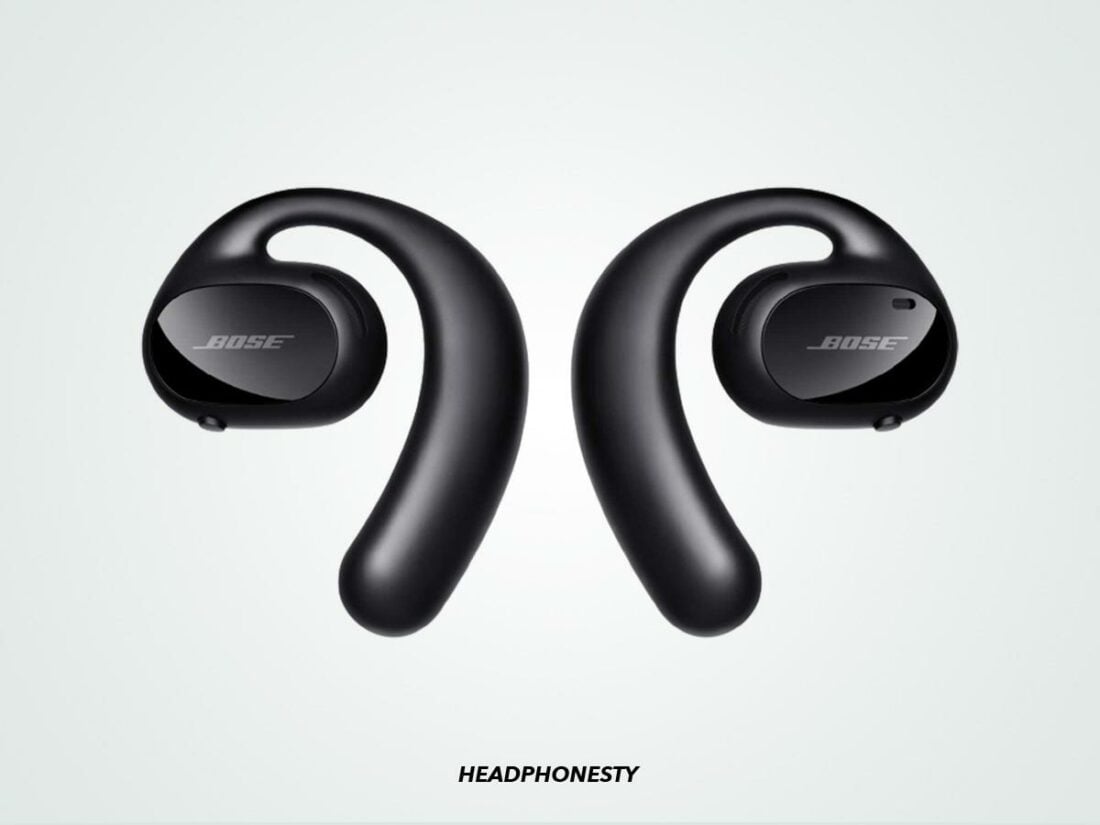
In contrast to over-ears and on-ears, open-ear headphones don’t cover the ears. They also don’t have the traditional headband and ear cup foams. Instead, they feature an around-the-neck or over-ear design, with the speakers positioned over the cheek and jawbone area. This makes them the most distinguishable out of all three fit types.
Advantages of open-ear headphones
- Better awareness: Not having anything covering or inserted in your ear canals allows ambient noise to filter in freely. As such, you get better situational awareness when wearing on-ear headphones outdoors.
- Portability: These headphones are easier to store and carry around as they don’t have bulky ear cups or headbands.
- Comfortability: The slimmer profile of open-ear headphones also makes them lighter and more comfortable to wear than over-ear and on-ear headphones.
Disadvantages of open-ear headphones
- Sound quality: Open-ear headphone speakers rest slightly towards the front of the ear, near the ear canal. So, you won’t get the same immersive sound quality that you typically would with over-ear headphones since your audio has to contend with ambient noise.
- Sound leakage: Given that open-ear headphones have exposed speakers, people in your immediate vicinity can hear your music, especially if you’re listening at high volume.
Who should buy open-ear headphones?
Commuters and those who frequently exercise outdoors will benefit the most from open-ear headphones. This fit-type ensures you’re constantly aware of what’s happening around you, whether you’re jogging along a busy street or waiting for boarding calls while traveling.
Sample open-ear headphones
4. Clip-on headphones
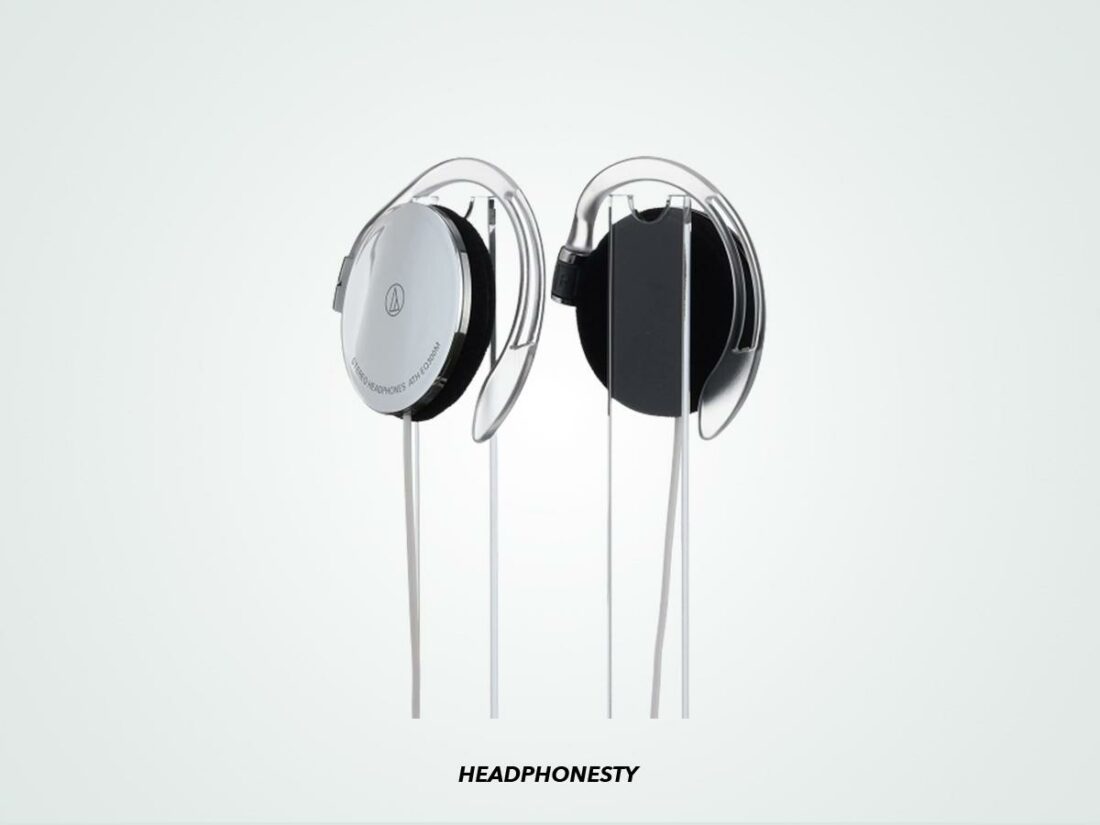
This type altogether abandons the headband and bulky ear cup design of open-back and closed-back headphones. In its place, you get thinner, flatter discs that house speaker drivers and hooks that go around your ears.
The structure of clip-on headphones resembles typical earbuds with ear hooks, like the Bose Sport Open Earbuds. However, the former are different because they feature larger drivers (13-30mm) than regular earbuds (8-15mm). There are even types you can attach to motorcycle helmets using adhesive or velcro strips.
Advantages of clip-on headphones
- Stability: The hooks on clip-on headphones have a remarkably secure fit, making them feel more stable than earbuds. Thanks to this feature, you can jog, run, and do all manner of activities without worrying about them falling out.
- Breathability: With only thin discs that go over the ears, clip-on headphones offer better ventilation than open-back and closed-back headphones.
Disadvantages of clip-on headphones
- Noise isolation: Clip-on headphones don’t have an enclosed structure like closed-back headphones. The drivers are also more exposed than open-back headphones, as they only have foam padding covering them. So, noise isolation isn’t the best with these types of headphones.
- Durability: Generally, most clip-on headphones have flimsy builds consisting of a thin cable adjoining the two speaker discs. Most also don’t come with water resistance, so they’re not ideal for wet weather.
Who should buy clip-on headphones?
Those looking for hands-free communication will benefit the most from clip-on headphones. If you’re frequently taking work calls or doing activities that require constant use of your hands, like lawn mowing or similar chores, these headphones can make things more convenient.
Clip-on headphones are best for outdoor activities like hiking, biking, and motorcycle riding, provided the weather is agreeable.
Sample clip-on headphones
2 Types of Earbuds Based on Fit
Earbuds are similar to headphones but on a much smaller scale. They feature two tiny drivers you wear by inserting them into the ear canal instead of over the ears. The depth of insertion, however, varies.
To illustrate this further, let’s discuss the different types of earbuds:
1. In-ear monitors
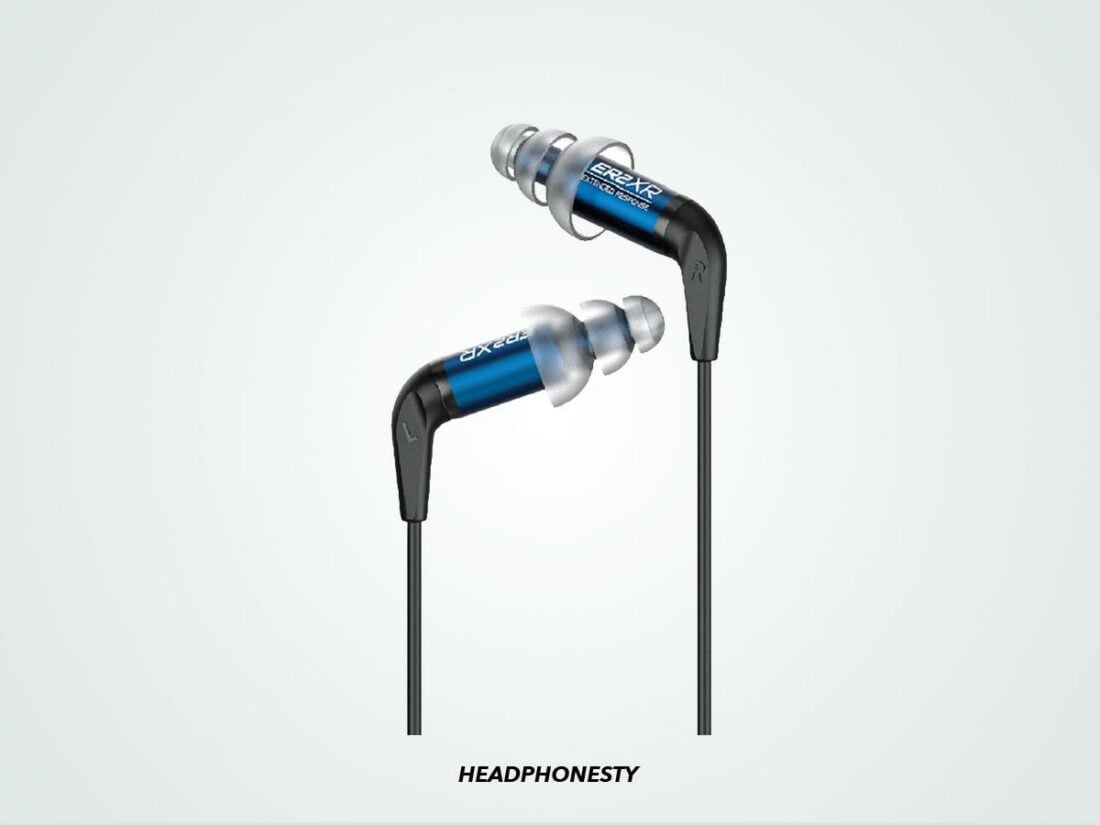
In-ear monitors (IEMs) have an elongated earbud structure usually paired with single, double, or triple-flange ear tips. This design not only lets you wear IEMs deep inside the ear canals but also allows you to customize your fit with different-sized ear tips.
Advantages of in-ear monitors
- Customizable fit: IEMs almost always come with three pairs of different-sized silicone tips. The more tip options you have, the more chances of finding the perfect fit.
- Noise isolation: Since they sit deep in the ear canals, IEMs cover the entirety of the canal quite well. In a way, it’s basically like wearing earplugs.
- Sound quality: These earbuds bring your audio closer to your eardrums. The closer the sound, the more details you can hear. Thus, the sound quality may be better in this case.
Disadvantages of in-ear monitors
- Comfortability: Despite the customizable fit, you may still experience discomfort as IEMs sit in a sensitive part of the ear. Some people have even gotten allergies and itchiness from silicone ear tips, so this is something to keep in mind.
- Finding the right ear tip size and material: Finding the perfect fit involves a lot of trial and error. If you’re not up for the monotony of testing different sizes and materials, you may better appreciate classic earbuds.
- Safety: Given how deeply worn they are, IEMs can pose a safety risk to your hearing, especially when listening at high volume. Remember, exceeding 60-85 decibels while using these earbuds can cause damage.
- Hygiene: IEMs can bring dirt and debris into your ear canal. This can be worrisome because the deeper parts of the ear are delicate, so there is always a risk of infection.
Who should buy in-ear monitors?
Due to their portability, in-ear monitors are great for commuters and athletes who are always on the go. Singers and musicians will also appreciate the sound quality that in-ear monitors provide. In fact, if you watch a lot of concerts, you’ll notice performers wearing these on stage.
Finally, if you’re a fan or creator of ASMR videos, in-ear monitors let you get up close and personal with your audio.
Sample in-ear monitors
2. Classic earbuds
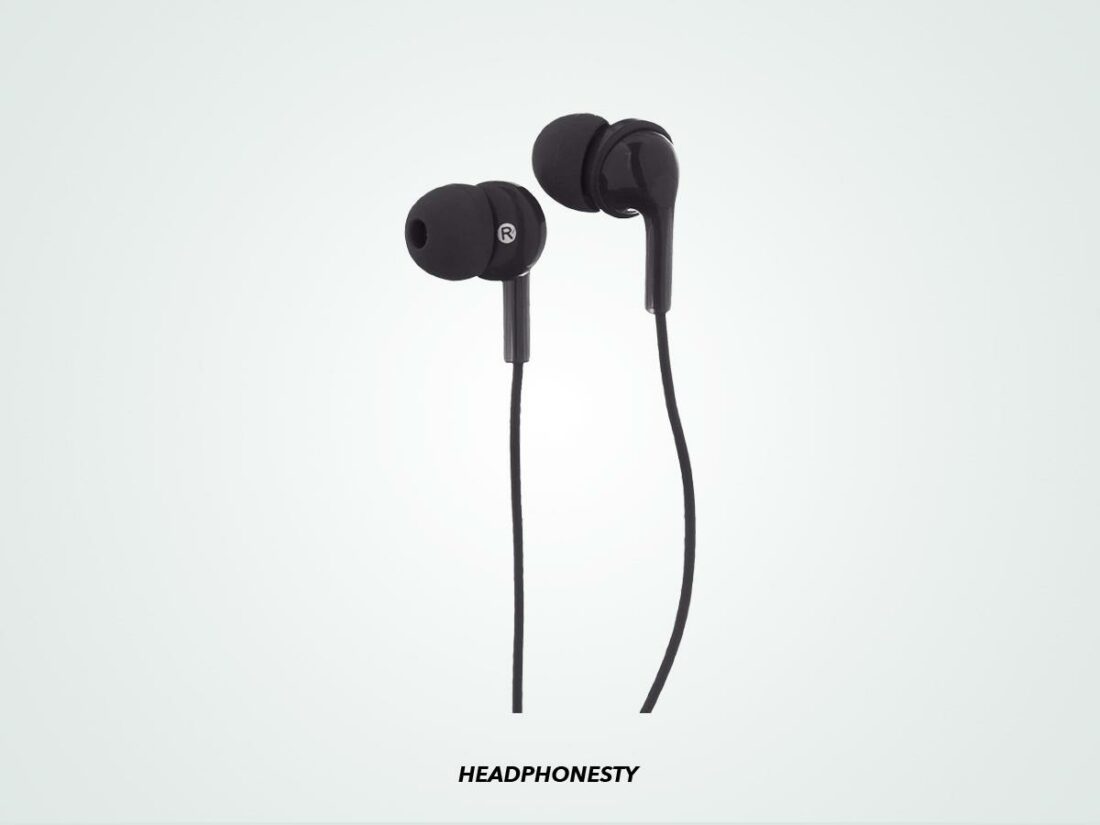
Unlike IEMs, classic earbuds have a more rounded structure designed to sit shallowly at the entrance of the ear canal. These types typically have only one dynamic driver per earbud, unlike IEMs, which can have multiple drivers.
Advantages of classic earbuds
- Affordability: Classic earbuds are typically much cheaper than headphones. However, when comparing earbuds’ prices with IEMs, the former is usually more affordable.
- Comfort: Earbuds sit right outside your ear canal. So, you’re less likely to experience comfort problems or ear fatigue when using these.
Disadvantages of classic earbuds
- Noise isolation: Classic earbuds don’t go all the way inside your ear canals or completely seal them. As such, there’s a higher chance that sound will filter in or leak out, especially if you’re wearing ill-fitting ear tips.
- Fit: Since classic earbuds only sit at the entrance of the ear canals, they can quickly become loose. Additionally, they don’t usually have optional ear tips for a customized fit.
Who should buy classic earbuds?
Classic earbuds are best for those who are on a budget. There are many extremely cheap models that you can buy anywhere if you’re not too particular about sound quality. Moreover, classic earbuds are an excellent option if you’re susceptible to ear infections and sound sensitivities because they don’t sit deep inside the ear canal.
Sample classic earbuds
2 Types of Headphones Based on Design
Although the different fit types are specific to headphones and earbuds, the different types by design apply to both categories. For this section, we’ll focus primarily on speaker driver housing, how it affects sound quality, and its benefits.
Here are the different types of headphone designs:
1. Closed-back headphones
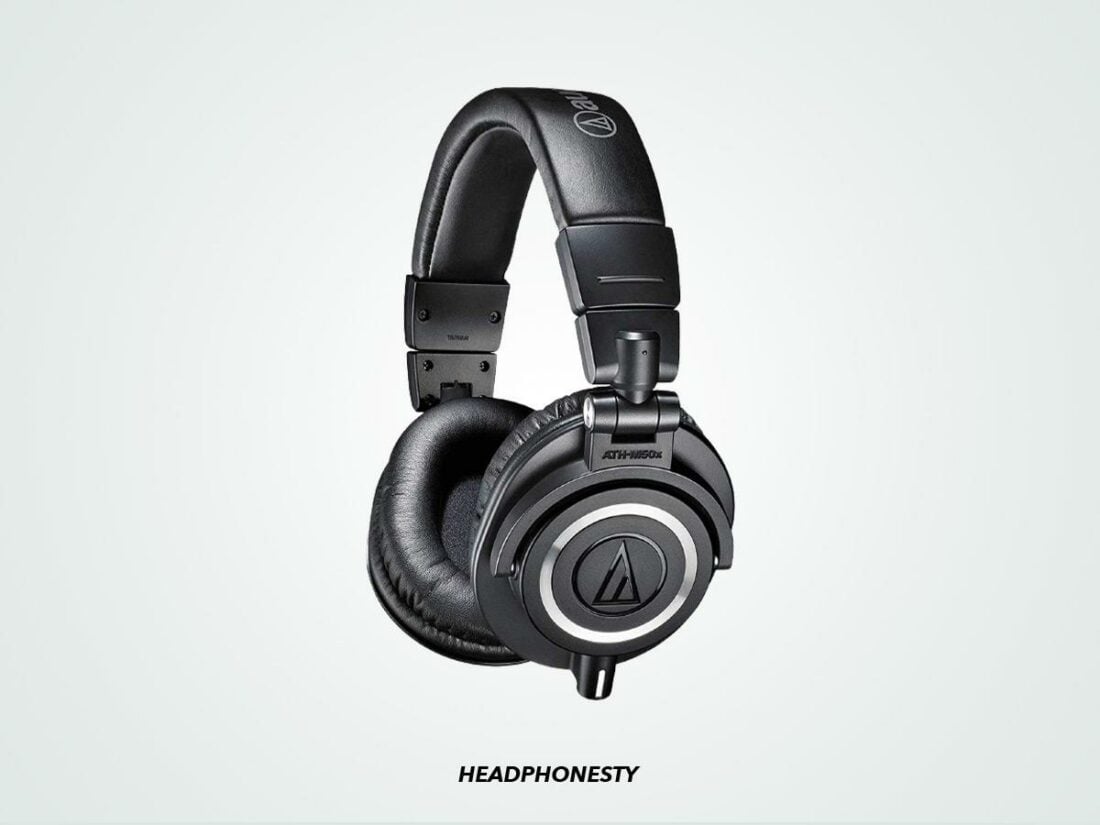
As the name suggests, these headphones have their drivers completely enclosed in hard outer shells made from plastic, wood, or metal. This design helps direct audio straight from the speakers and into your ears with little to no sound leakage.
Advantages of closed-back headphones
- Noise isolation: Since the drivers come with a hard outer shell, external noise won’t easily penetrate and ruin your listening session.
- Sound leakage: If no noise is getting in, you can rest assured that your audio isn’t getting out either. In fact, this ability to seal in sound more effectively is what makes closed-back headphones a popular choice for studio use.
- Better bass: The enclosed speaker housing amplifies your audio simply because the sound waves have nowhere else to go. And coupled with the proximity effect, which says that bass frequencies become louder the closer you are to an audio source (the drivers), closed-back headphones can deliver phenomenal bass.
Disadvantages of closed-back headphones
- Breathability: One downside of this headphone type is its breathability. Based on user experience, closed-back headphones almost always guarantee sweaty ears due to the lack of ventilation.
- Soundstage: Closed-back headphones tend to amplify bass frequencies, making the soundstage sound more compressed or narrow to the trained ear. This is particularly true for some mid-range to low-end headphones that are poorly tuned. However, this isn’t always immediately noticeable to casual listeners.
Who should buy closed-back headphones?
Closed-back headphones are best for recording artists. As discussed above, they offer less distraction, minimal sound leakage, and better monitoring for studio use.
Those who need the added noise isolation can also benefit from closed-back headphones. And that goes for students, office workers, remote workers, and anyone who requires a quiet setting to get their jobs done.
Sample closed-back headphones
2. Open-back headphones
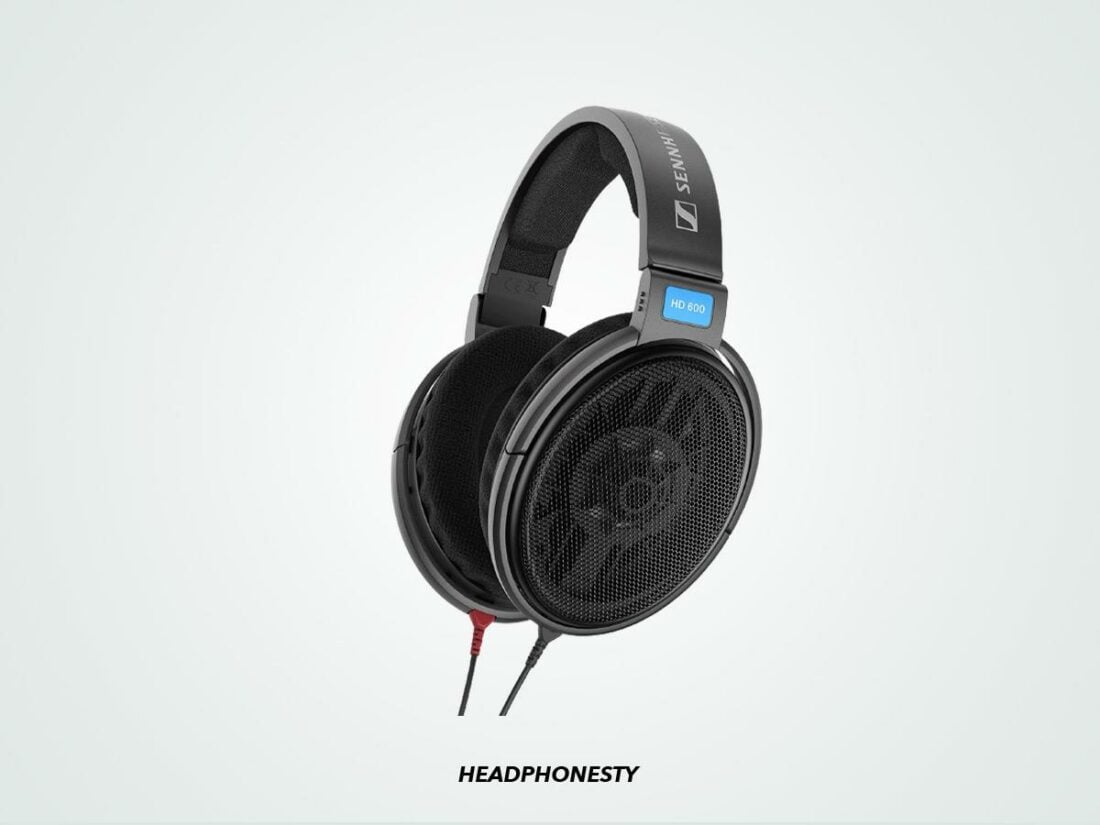
Open-back headphones are the opposite of closed-back headphones in that they allow airflow through the ear cups, thanks to vents in the driver housing. With this feature, sound waves flow towards and away from your ears, giving you a wider soundstage and a more natural-sounding audio quality.
Advantages of open-back headphones
- Audiophile-level sound quality: Critical music listeners believe that music should, in a sense, be allowed to breathe. So, open-back headphones are preferred because they deliver more expansive audio quality that makes your music feel part of your environment rather than in an enclosed space.
- Breathability: Due to the added ventilation, open-back headphones are more suited for long hours of listening and less likely to make your ears feel stuffy or sweaty.
Disadvantages of open-back headphones
- Sound leakage: Given their vented design, sound leakage is a concern for these headphones. So, if you’re particular about that, you might be looking at the wrong product.
- Noise isolation: The vents on open-back headphones provide a more natural ambiance when listening to music. However, they can also let all sorts of noise in, which could ruin a good listening session.
Who should buy open-back headphones?
In terms of sound quality, open-back headphones have the upper hand. However, this is only when you can get the background to cooperate.
That said, open-back headphones are excellent for those who mainly listen to music at home and want the best quality possible. Since they have a flatter and more neutral response due to less sound reflection in the ear cups, they deliver a more natural and accurate sound.
Sample open-back headphones
3 Types of Headphones Based on Connectivity
So far, we’ve learned about different types of headphones and earbuds according to fit and design. In this section, we’ll focus on the different types of connections for headphones and earbuds, which includes wired, wireless, and true wireless options.
Here’s how each connectivity type works:
1. Wired headphones
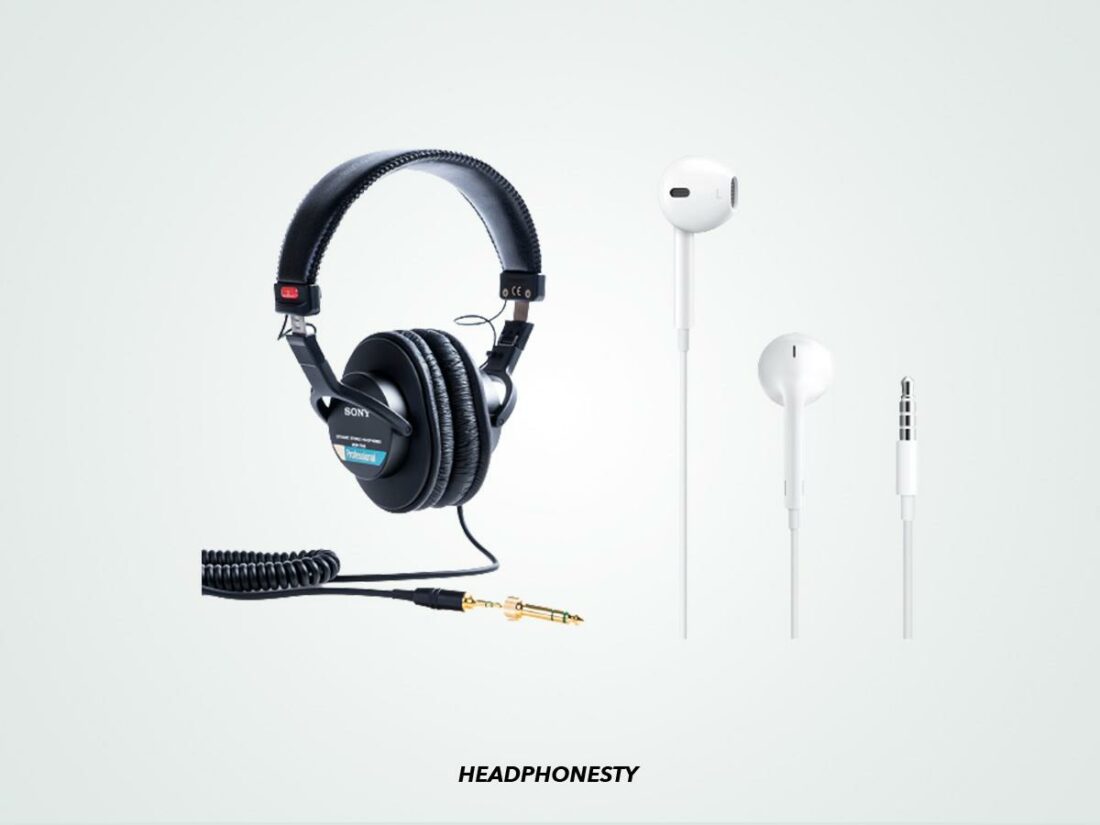
When it comes to wired headphones and earbuds, the typical configuration that comes to mind is two wires connecting both speaker drivers, leading to a single 3.5mm plug. The plug then goes into the corresponding 3.5mm jack on an audio source (a PC, laptop, or mobile device).
However, not all wired earbuds or headphones exclusively use a 3.5mm plug and jack configuration.
For example, some wired headsets have a USB plug for use with PCs, while others, like the Apple EarPods, have a Lightning connector for iOS devices. Some models, like the Sony MDR7506 headphones pictured above, come with a 6.35mm or ¼-inch adapter designed for use with professional audio equipment.
Advantages of wired headphones
- Better sound quality: Wired headphones deal with analog signals, which the human ear can hear. This means no audio conversion or compression takes place, unlike it does with wireless Bluetooth headphones. As a result, you hear close-to-original sound reproduction.
- Cost: Without wireless technology, many wired headphones come cheap. Many models also come with detachable cables. So, if you accidentally destroy one, you can easily replace it.
- Reduced latency: Wired headphones have a barely noticeable latency of 5-10 milliseconds. This is significantly less than wireless headphones’ 34-200 millisecond delay, making them excellent for gaming.
- Ease of use: There’s no need to worry about pairing issues with wired headphones. Just plug and play, and you’re good to go.
- Unlimited playtime: Since there’s no downtime for charging, you can keep listening to your music for as long as you want.
Disadvantages of wired headphones
- Durability: Headphone wires are often the first to show signs of wear and tear, especially if you use them frequently. So, although you can replace them, it can be frustrating if you constantly have to do it.
- Restricted movement: Wired headphones keep you tethered to your audio source. It’s not always ideal and is a surefire way of destroying your headphone cable if you forget you’re wearing your headphones and suddenly walk away. So, don’t use a wired option if you tend to move around a lot.
- Limited compatibility: If your headphones only have a 3.5mm plug and no extra adapters, you’ll be limited to devices with that same configuration. This can be even more frustrating since many mobile phones have ditched the 3.5mm jack.
Who should buy wired headphones?
If you’re looking for reliable sound quality for music production or important work calls, go for wired headphones. Moreover, if you’re a hardcore gamer, the wired option is ideal if you can’t have too much in-game latency. Lastly, wired headphones also work for those needing affordable, easy-to-use headphones.
Sample wired headphones
2. Wireless headphones
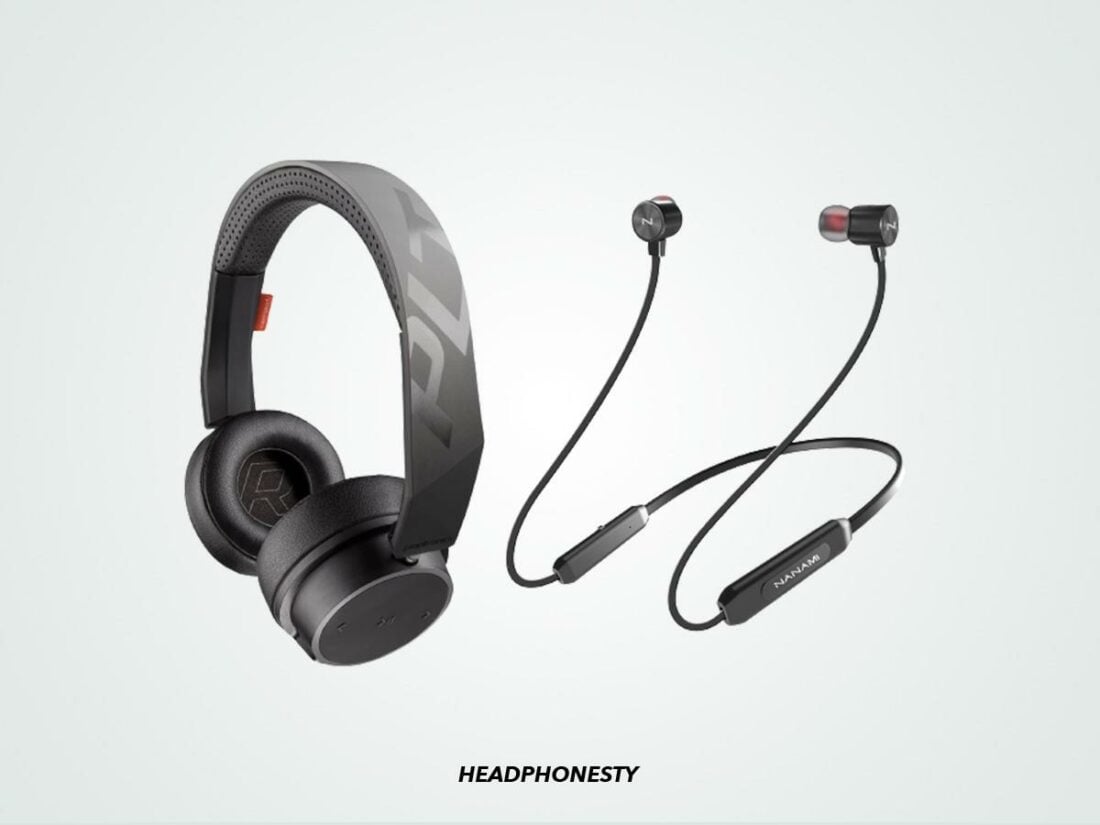
Wireless headphones and earbuds connect to audio sources via radio frequency (RF), infrared (IF), or Bluetooth. As such, they don’t come with the typical headphone plug, as seen in wired headphones.
However, this doesn’t mean wireless headphones are completely devoid of wires. Wireless earbuds, like the Beats Flex, still feature a wire connecting both earbuds.
It’s the absence of a plug connecting them to a device that makes them “wireless.”
Advantages of wireless headphones
- Portability: Wireless headphones are easier to handle and store in pockets or smaller carrying cases. You can even use a customized case and hook them onto your ID lace, bag, or belt loop.
- Convenience: Once you’ve paired your wireless headphones for the first time, you’re good to go. There’s no need to untangle wires or place cables inside your shirt before jogging. Simply pop them in your ears, and they should connect in seconds.
Disadvantages of wireless headphones
- Latency: Since wireless headphones connect and transmit audio through radio signals, delays can happen. For this, there are ways to fix latency issues, but if it’s something you can’t live with, it’s best to go for a wired option.
- Sound quality: Bluetooth audio codecs compress audio signals before transmitting them, resulting in some loss of quality. Although this isn’t immediately noticeable, those with more refined hearing may not appreciate it.
- Battery life and charging: Unfortunately, wireless headphone batteries won’t run forever and require frequent charging. Therefore, if you prefer not to have downtime, go for wireless headphones with a fast-charging function.
Who should buy wireless headphones?
Wireless headphones are best for those who need freedom of movement and aren’t picky about sound quality. So, if you frequently exercise indoors or outdoors, these make a great choice. Even those doing simple household chores could also benefit from wireless headphones.
Sample wireless headphones
3. True wireless earbuds (TWS)
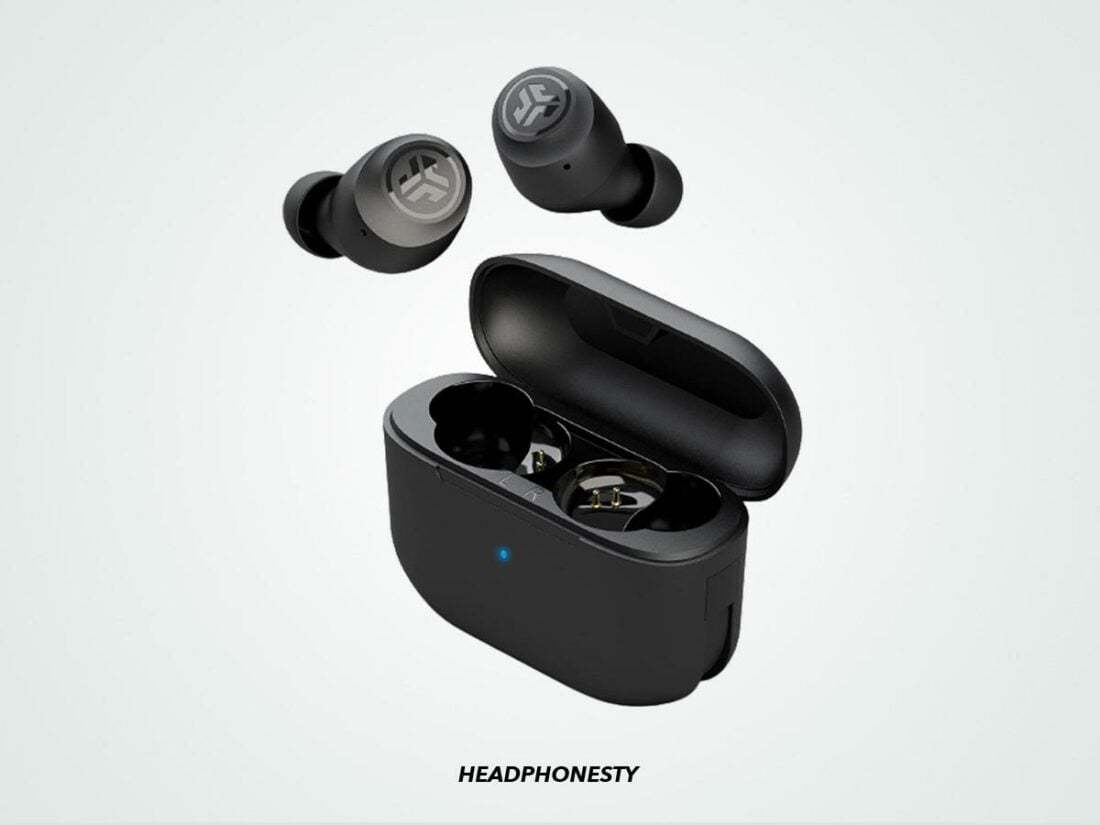
True wireless earbuds are two separate earbuds connected via a network called a piconet. Under this network, one earbud functions as a bridge between the audio source and the second earbud, allowing all three to communicate seamlessly.
As the name suggests, the earbuds are completely wireless, unlike wireless earbuds, which have wires connecting both earbud drivers. Moreover, true wireless earbuds almost always come with a dedicated case that charges and stores the earbuds.
Advantages of true wireless earbuds
- Portability: It doesn’t get more portable than true wireless earbuds. These types sit comfortably in your ears and have no dangling wires to get in your way. So, you can bring them anywhere and have freedom of movement while wearing them.
- Compatibility: Millions of devices have Bluetooth functionality, so you’ll be hard-pressed to find mobile devices that aren’t compatible with true wireless earbuds products. This beats buying adapters so you can use your 3.5mm plug headphones with your jackless phone.
- Fast and easy charging: Placing the earbuds in their case automatically charges them and prepares them for the next time you need them. It’s hassle-free and eliminates the need to carry additional charging blocks and wires.
Disadvantages of true wireless earbuds
- Easy to lose: Since true wireless earbuds are so small, they’re incredibly easy to lose. This can happen due to carelessness or forgetfulness, but sometimes it can also occur if they don’t fit particularly well and fall out of your ears.
- Expensive to replace: Unfortunately, if you lose one earbud, you’ll need to replace the entire set. Warranties also typically do not cover losses, so you’ll spend a lot if you tend to lose things.
Who should buy true wireless earbuds?
Athletes, commuters, frequent travelers, and anyone who’s always on the go stand to benefit from true wireless earbuds. Their compatibility and portability make them easy and convenient to use when you’re on the move. The bonus of fast-charging and long battery life make them great traveling accessories. Just make sure not to lose them!
Sample true wireless earbuds
4 Types of Headphones Based on Technology
Now that we’ve tackled different headphone types according to fit, design, and connectivity, we’ll move on to the last category – technology. This revolves around additional features designed to electronically remove ambient noise, improve voice pickup, or alter how sound reaches your ears.
To understand this more, let’s discuss the different types of technologies:
1. Noise-canceling headphones
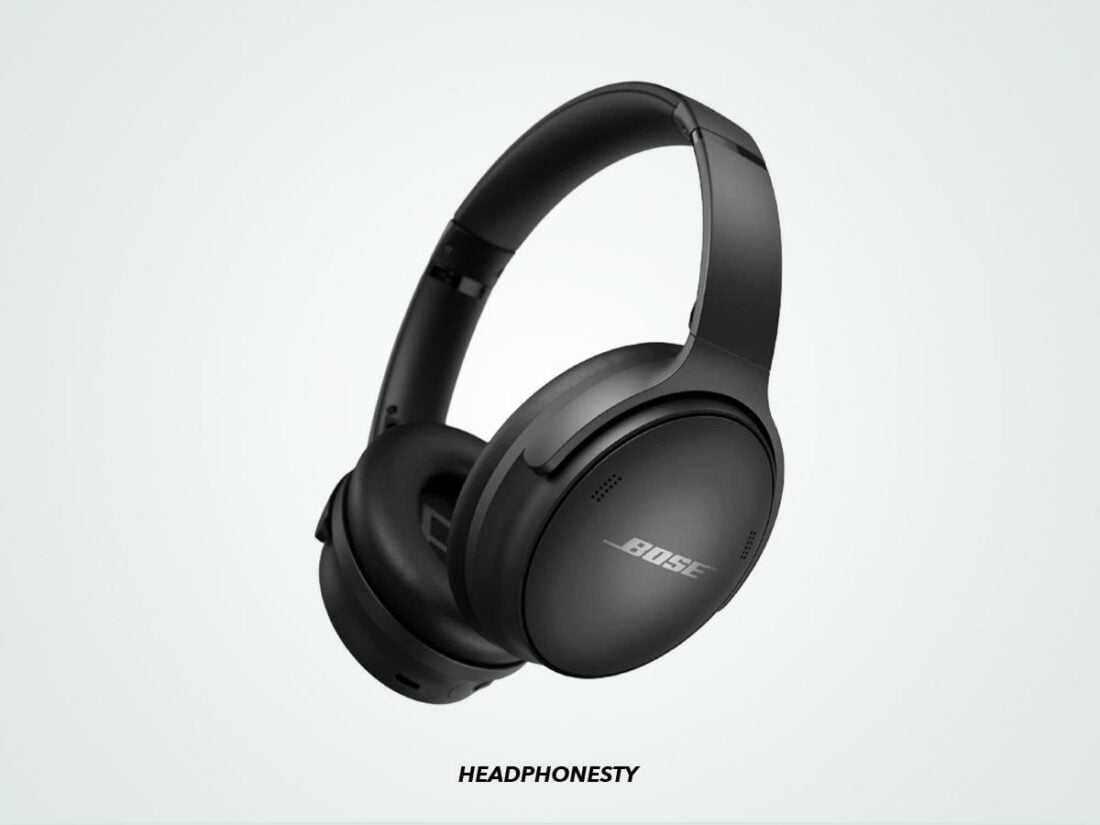
Devices with noise-cancellation technology usually come with more than one microphone dedicated to listening to ambient noise in your surroundings.
The noise-canceling system takes an audio sample of that noise and creates an opposing frequency. When played over the original signal, they cancel each other out and effectively reduce unwanted noise.
Noise-canceling headphones aren’t immediately recognizable as such because the technology is part of the headphones’ internal circuitry. So, you’ll need to double-check the product description or packaging before making a purchase.
Advantages of noise-canceling headphones
- Safer hearing: Since noise-canceling headphones actively block background noise, they eliminate distractions. As such, you get clearer audio and won’t need to keep increasing your volume to hear better.
- Helps concentration: The benefits of noise-canceling headphones go beyond music. Even without audio playing, they can still cancel background noise so that you can focus on tasks.
- Alleviates noise-induced stress: Too much noise can be stressful if you live in a high-traffic area or a noisy household. In this case, noise-canceling headphones can be a lifesaver, especially if you suffer from noise sensitivity.
Disadvantages of noise-canceling headphones
- Price: Noise cancellation technology delivers real-time results. It’s a feat of audio engineering and therefore comes with a hefty price tag. This is especially true for high-end noise-canceling headphones that provide super accurate and advanced noise cancellation. Fortunately, there are affordable noise-canceling options if you’re on a budget. However, you can expect a difference in noise reduction quality.
- Battery: ANC headphones use up more battery life than regular headphones. And even if you’re not playing audio or listening in wired mode, the ANC will continue to drain your battery.
- Sound quality: Some types of ANC can introduce audio artifacts that affect sound quality. For example, headphones with hybrid and feedback ANC have mics inside the ear cup. These mics may pick up residual low-level noise during the noise-canceling process and amplify bass frequencies in your audio, which not everyone will like.
Who should buy noise-canceling headphones?
As mentioned earlier, those needing extra help concentrating should look into noise-canceling headphones. These headphones also alleviate noise-related stress in adults and children with sensitive hearing.
Frequent flyers will also benefit as these headphones excel at canceling out low-frequency noise like jet engines.
Sample noise-canceling headphones
2. Bone conduction headphones
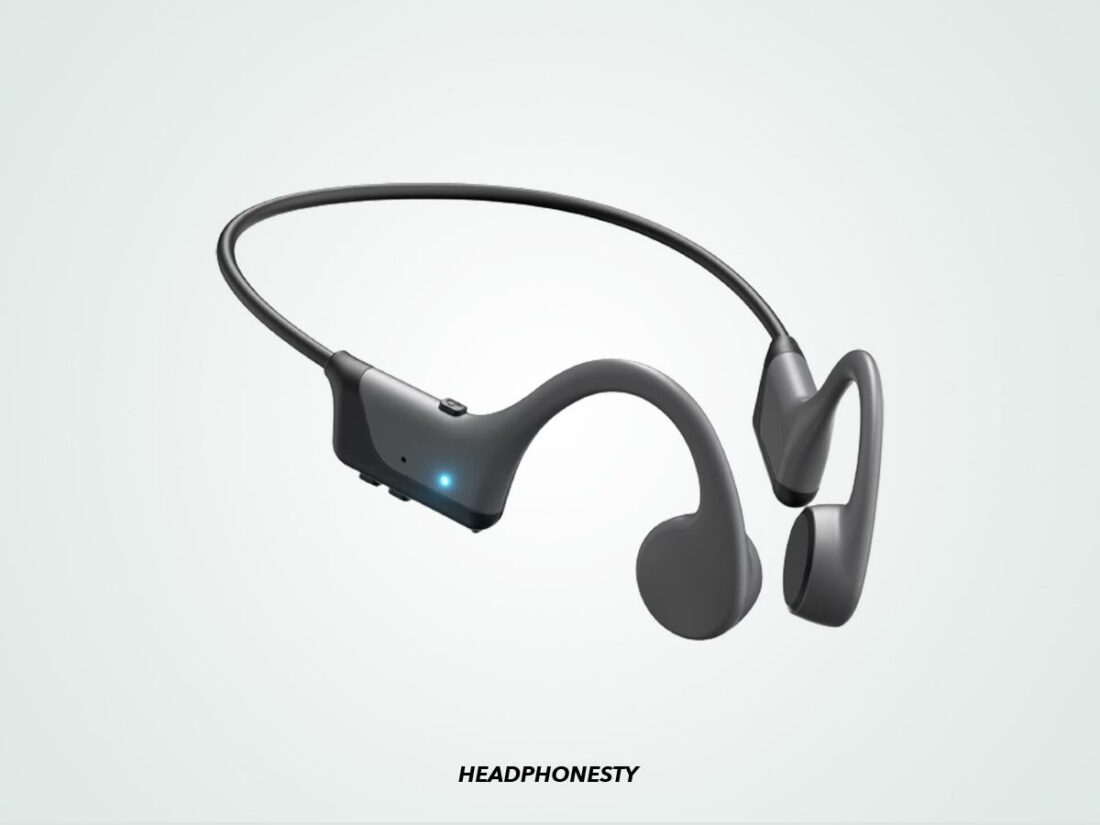
Standard headphones use air conduction to deliver sound to your ears. This means that audio travels from the speaker drivers and through your ear canals. On the other hand, bone conduction headphones use the bones in your cheek and jaw to deliver audio vibrations straight to your inner ear.
Appearance-wise, bone conduction headphones are easy to identify. These types don’t have the traditional headband and ear cup structure. Instead, they feature an around-the-neck band and two bone conduction pads over the cheek/jawbone area.
Advantages of bone conduction headphones
- Increased situational awareness: Bone conduction headphones have an open-ear fit type. They sit off the side of the ear’s entrance, on the cheek and jawbone. As such, you’ll have no problem hearing your surroundings with your ears entirely unblocked.
- Comfortable fit: Since your ears are free from anything covering them or inserted inside, there’s much better ventilation. You can wear them longer without having sweaty, stuffy ears disrupting your listening sessions.
- Hearing aid: Bone conduction technology is an excellent tool for those with conductive hearing loss. This affects the outer and middle ear, preventing sounds from reaching the inner ear. Given that bone conduction headphones bypass those parts of the ear, they make remarkable hearing aids for those who need them.
Disadvantages of bone conduction headphones
- Sound quality: Bone conduction headphones can’t reproduce the full range of frequencies with nuance and accuracy since they use vibrations. Additionally, bone conduction headphones have virtually no noise isolation, leaving your ears open to all external noise. So, don’t expect sound quality comparable to that of closed-back headphones.
- Vibrations: These types of headphones can cause mild headaches and discomfort due to the vibrations. If you’re the type who gets easily distracted by the extra sensations, using bone conduction headphones could become annoying in the long run.
Who should buy bone conduction headphones?
Those with hearing issues will benefit the most from bone conduction headphones. However, not all types of hearing loss are covered. Bone conduction helps with conductive hearing loss because it bypasses the outer and middle ear, where the issue lies. If you have inner ear problems, or sensorineural hearing loss, bone conduction headphones won’t make a difference.
On the other hand, commercial bone conduction headphones are fantastic for outdoor sports. These types usually have outstanding durability and water resistance. The open-ear form factor also makes them ideal for team sports or activities that still require communication.
Sample bone conduction headphones
3. Headset
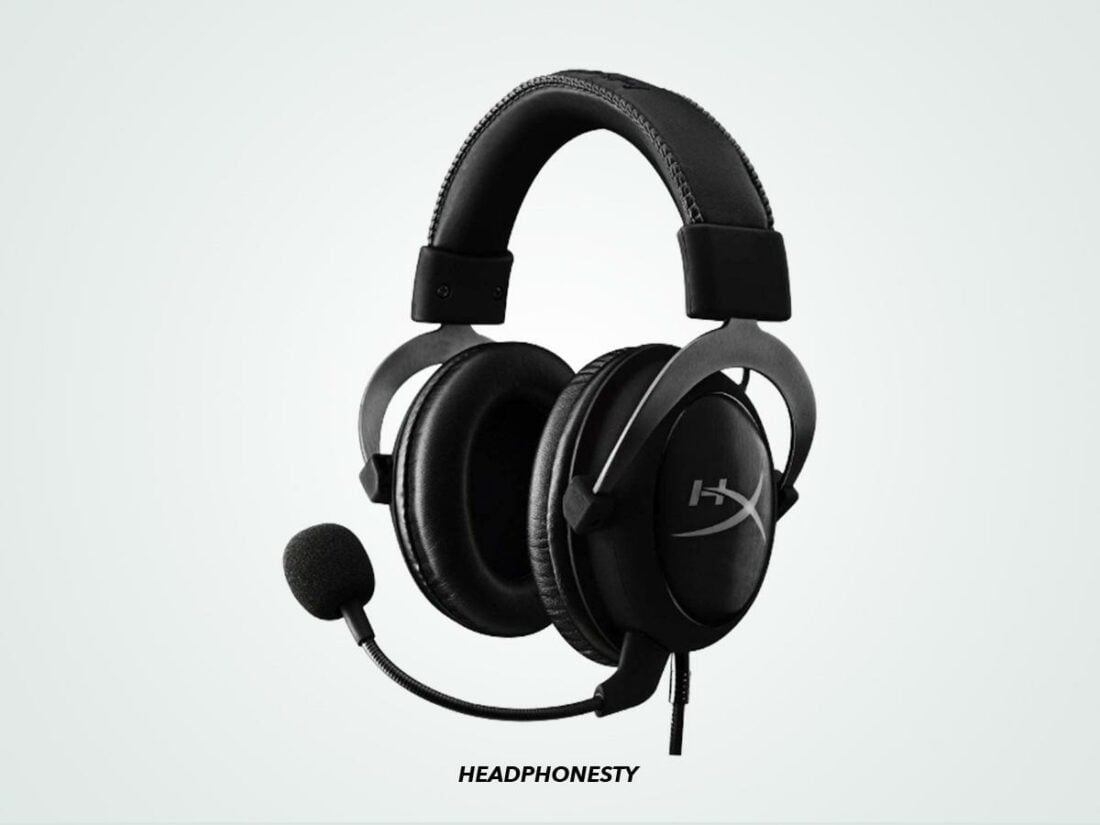
Headsets generally look the same as any other type of headphones. However, the defining difference is the presence of a boom mic attached to one of the ear cups.
With a dedicated mic closer to the mouth, headsets provide more accurate voice pickup. So, you’ll typically find them in office settings like call centers where communication is paramount. They’re also an essential gaming accessory, particularly for those who play online games or e-sports.
Advantages of headsets
- Price: Some of the best premium gaming headsets range from US$100-350 a pair, making them more affordable than most premium headphones that go from US$600-1000. For instance, you can get the SteelSeries Arctis Nova Pro, one of the best gaming headsets on the market, for less than US$350.
- Better mic: Regular headphones have discreet mics since they have to fit inside the ear cup. On the other hand, boom mics allow for better mic hardware and software simply because there’s more space. Headset mics also usually have more features, like CVC, DSP, or ENC noise cancellation, which improve voice clarity.
- Immersive soundstage: Gaming headsets come with virtual surround sound technology like Dolby Atmos, DTS Headphone: X, and THX Spatial Audio to enhance your playing experience with immersive sound. Other headsets use multiple drivers, like the discontinued Razer Tiamat 7.1 V2, which used 10 in total.
Disadvantages of headsets
- Build quality: The trade-off for having additional features like ANC, detachable, noise-canceling boom mics, and surround sound technology is that the build quality sometimes suffers. This is especially true in cheaper headsets that feature flimsy, plastic designs.
- Connectivity options: Headsets come in both wired and wireless configurations. However, available connectivity options can vary depending on the brand. Some headsets only have a 3.5mm plug connector, while others come with additional USB adapters. Moreover, some wireless gaming headsets require a separate dongle when used with platforms like Xbox and PlayStation, which can be inconvenient.
Who should buy headsets?
Those who take frequent calls for work should go for a headset to keep their hands free to do other things. Hardcore gamers who enjoy playing team-centric games, shooting games, or MMORPGs should also get headsets to make communicating with other players easier.
Sample headsets
4. Air tube headphones
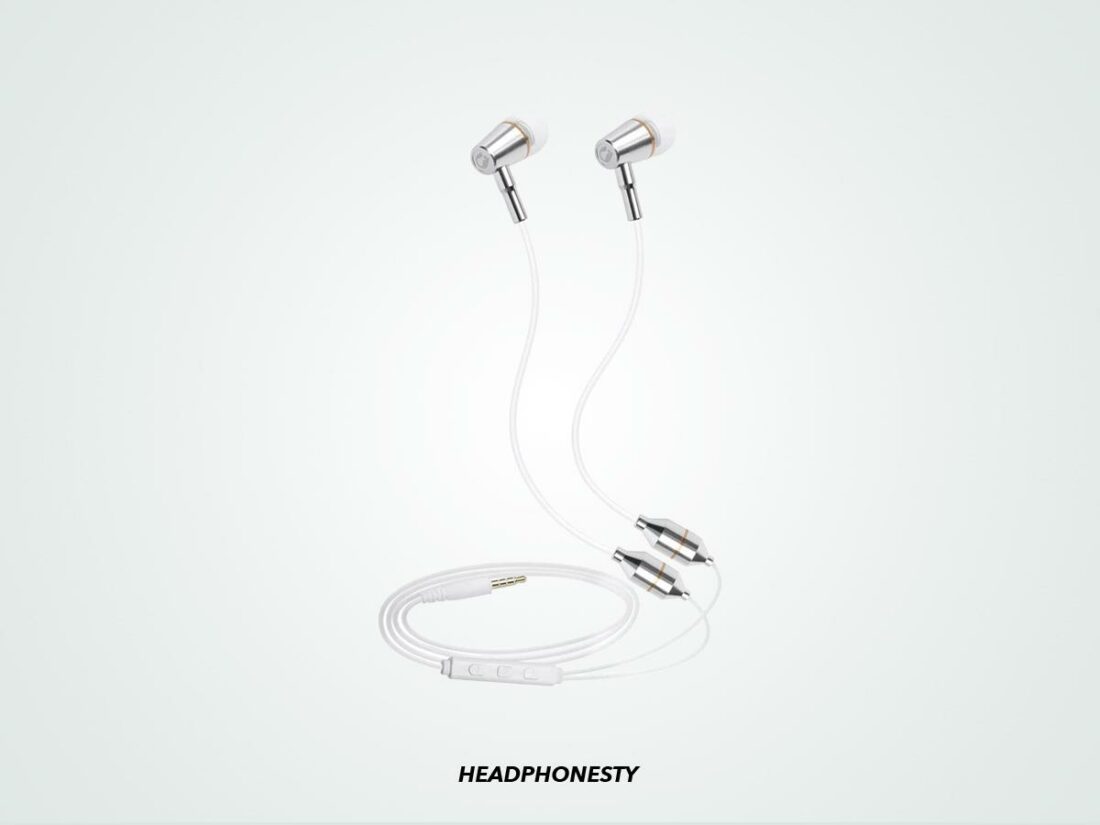
Air tube headphones look like a pair of regular wired earbuds. However, they feature a unique design element designed to reduce exposure to EMF (electromagnetic field) radiation.
These earbuds have a 3.5mm plug that goes into an audio source. Sound travels up traditional metal wires until it reaches the metal hubs, which house external speakers. From there, the audio travels up two hollow plastic tubes and then exits the silicone earbuds as harmless sound waves you can hear.
Advantages of air tube headphones
- Safe alternative to regular headphones: If EMF radiation is a major concern for you, it’s the perfect reason (and possibly the only one) to go for air tube headphones.
Disadvantages of air tube headphones
- Price: Unfortunately, air tube headphones are more expensive (US$25-80) than standard earbuds, given their unique technology. They’re even more expensive than Apple EarPods, which cost US$16.99! Although some models come with an in-line mic and controls, they might seem impractical for some, considering they don’t come with any other special features.
- Build: Durability isn’t the best with air tube headphones, as it’s all too easy for round, hollow wires to become tangled or torn. Some brands’ warranties also don’t cover broken wires caused by misuse or neglect, so you’ll have to buy a new pair if you destroy one.
- Sound quality: Sound waves have to travel a bit before reaching your ears, which means you can expect some loss of quality along the way. And since you’re technically listening to a tiny speaker through a small plastic tube, your audio won’t have the same clarity you get from conventional earbuds and headphones.
Who should buy air tube headphones?
Ultimately, there doesn’t seem to be any other pressing reason for buying air tube headphones other than to reduce EMF radiation exposure. So, if this is something you want to limit in your everyday life for health reasons, and if you’re not picky about sound quality, these headphones are an excellent option to consider.
Sample air tube headphones
Headphones Type Comparison Chart
We’ve created this handy reference table to help you better visualize how each headphone type compares to the others.
Remember that since some headphone types overlap with others (i.e., noise-canceling and over-ear headphones, true wireless earbuds and earbuds, etc.), we only included the different form or fit types.
As for your guidance, the “Relevance” column shows how heavily the different types of headphones affect each factor since we need to consider brand quality and user preferences. For example, the different types of headphones have low relevance under “Sound Quality” since this tends to be subjective to the user.
| Factor | Relevance | Over-ear | On-ear | Earbuds | In-ears | Open-ear |
|---|---|---|---|---|---|---|
| Fit | Medium | Best | Decent | Average | Average | Decent |
| Portability | High | Poor | Poor | Excellent | Excellent | Decent |
| Noise Isolation | High | Depends on Closed-back/ Open-back | Depends on Closed-back/ Open-back | Poor | Depends on the fit of the ear tips | N/A |
| Sound Leakage | High | Depends on Closed-back/ Open-back | Depends on Closed-back/ Open-back | Excellent | Excellent | Worst |
| Sound Quality | Low | - | - | - | - | Worst |
Conclusion
There’s no shortage of headphones out there. Still, there’s no need to feel overwhelmed by everything available. With the fifteen categories we’ve come up with, you’ll be able to narrow down your selection and find something perfect for your lifestyle and needs.
Did you find our list helpful? What are your favorite types of headphones? Tell us more in the comments!
